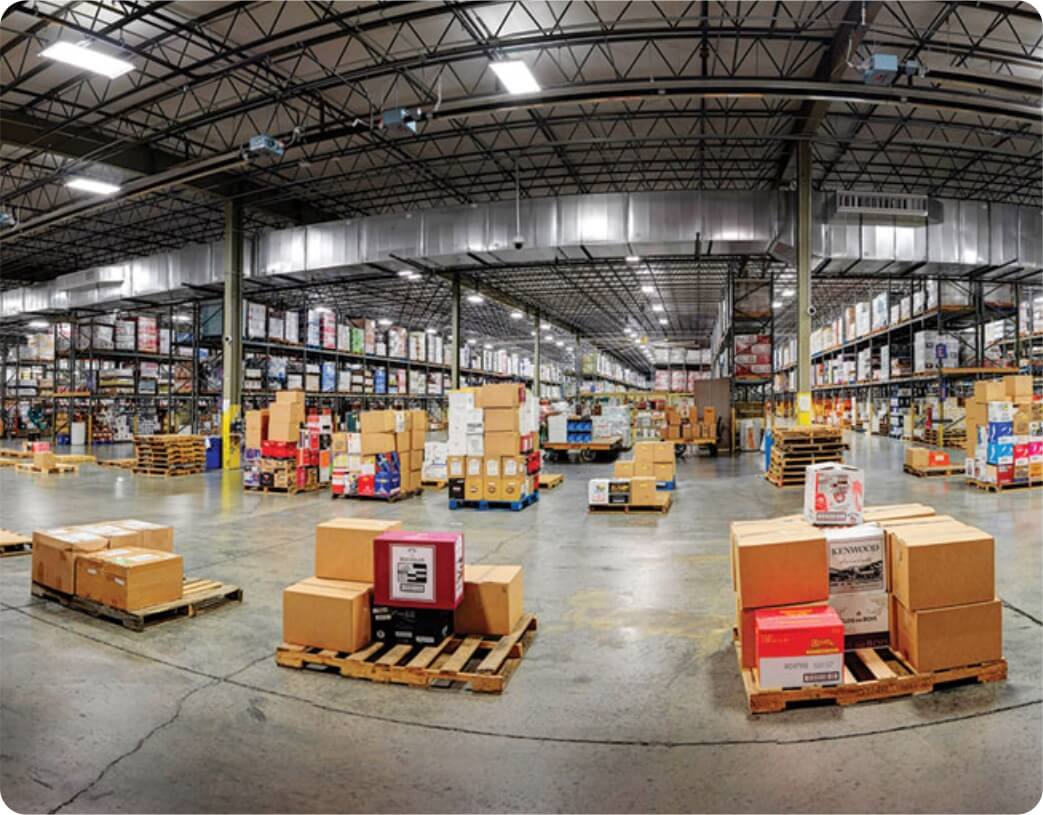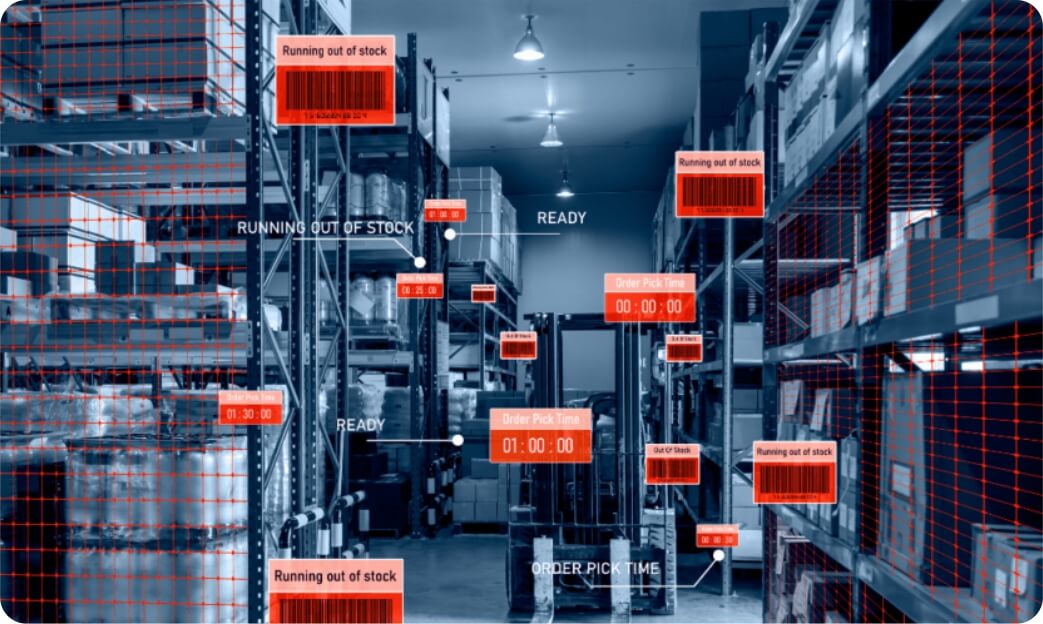- GF/ SF - Tejas, Opp Hotel Prasadalay, Shukrawar Peth, Pune - 411002
- +91 90 2132 2132
Warehouse Throughput: Key Strategies to Maximize Efficiency and Productivity

Warehouse throughput is the key to a smoothly running warehouse. Ever thought of what makes a warehouse operate smoothly? Well, the answer is warehouse throughput: the rate at which product moves in and out of the warehouse system and the efficiency of that process. High throughput optimization can help you if you are dealing with higher-order volume or looking to reduce costs.
This blog will explore why warehouse throughput matters, how to measure warehouse throughput, and practical measures to improve it for an efficient and profitable operation.
What is Warehouse Throughput?
Warehouse throughput is all about how smoothly and quickly products move through your facility - from receiving raw materials to shipping out orders. It is like the heartbeat of a warehouse; the more efficiently things flow through, the better. To compute it, you take the total number of units processed (like orders shipped) and divide it by the time of step completion.
A busy warehouse is a warehouse running like clockwork, but if it's low, you might be dealing with slow picking, poor organization, or wasted space. In simple terms, throughput is a measure of how much product goes out and in, weekly, day by day, hourly, if you'd like to get a closer look at things. A follow-up on these stages enables identification of bottlenecks, streamlining operations, and keeping things running at peak efficiency.
Power of Warehouse Throughput: Why It Matters for Your Business
Curious to know why For e-commerce items, the flow of a warehouse isn’t just about speed, but rather at the same time accuracy and cost control. Tracking throughput helps businesses:
- Bottlenecks Identified: If picking takes excessively long or there is a communication gap among teams, the problem can be traced back to throughput data.
- Streamline Supply Chain: A smooth warehouse means fast deliveries and happy customers.
- Reduce Labor Costs: Workflow optimization reduces unnecessary efforts on the part of your team, which means working smarter, not harder.
How to Measure Warehouse Throughput
Throughput of a warehouse is calculated in terms of the number of units processed or received, picked, packed, or shipped over a specific time, as follows:
Throughput formula:
- Warehouse Throughput = Total Units Processed ÷ Time Period
Example:
If a warehouse of a third-party logistics (3PL) provider is currently running to fulfill e-commerce orders, on a particular day, this warehouse performs the whole processing of:
- 10,000 units received from suppliers: The warehouse receives 10,000 units to process for customer orders.
- 8,000 units picked and packed for orders: Of the received units, 8,000 are picked, packed, and prepared for shipment.
- 7,500 units shipped to customers: 7,500 units are successfully shipped to customers, completing the order fulfillment process.
To measure warehouse throughput for shipments, use:
Throughput = 7,500 units shipped ÷ 1 day = 7,500 units per day
Tracking how this metric changes over time gives the warehouse deeper insights into trends for optimizing workflows and improving efficiencies to process more orders with the same set of resources.
High Warehouse Throughput is a Game-Changer
Optimizing throughput in a warehouse is more than just moving things faster; it's more about optimizing an entire operation for efficiency that benefits the entire supply chain and keeps customers happy.
Cutting Costs & Reducing Waste
When the throughput is reduced, the result is delays, errors, and higher costs. Improving the efficiency can be the answer:
- Overtime reduction: More is done in normal hours rather than paying for extra shifts.
- Reduce storage costs: Aligning inventory levels to demand instead of overstocking.
- Avoid last-minute delivery fees: Faster processes mean no costly rush shipping.
Faster Deliveries = Happier Customers
The fact is that people do want the deliveries fast, and a well-optimized warehouse ensures:
- Shorter processing times: That is to say, faster order processing results in less time to miss the deadlines.
- Better customer reviews: Faster deliveries lead to happy, returning customers.
- Scalability for same-day shipping: If same-day delivery is offered, the warehouse must run like a Swiss watch to fulfill that promise.
Scaling Up Without Slowing Down
As businesses grow, so does order volume. Without proper throughput in the warehouse, this will lead to bottlenecks. An optimized system ensures:
- Orders flow effortlessly: More orders are processed efficiently even in peak seasons.
- Inventory flow: Prevent slow-moving stock from consuming valuable space.
- Expansion possibilities: An efficient warehouse can expand with your business rather than restrict it.
5 Simple Strategies to Boost Warehouse Throughput

Boosting warehouse throughput efficiency by combining smart strategies, the right technology, and a well-trained team. Businesses can streamline operations and handle more orders with ease.
Here are five effective ways to improve throughput.
-
Organize Your Warehouse for Efficiency
An untidy warehouse hinders all processes. Place goods of high demand close to the packing stations, batch pick to minimize unwanted trips, and ensure the aisles remain clear. Such minor adjustments in better labeling and intelligent shelving go a long way towards making speed and accuracy very impressive.
-
Store Inventory in Multiple Locations
Having all your stock in a single location delays your shipment time. Multiple fulfillment centers cut down on time to reach your customers but also reduce shipping costs. Warehousing on demand can add flexibility in a growing business without any long-term commitment.
-
Train Your Team for Speed and Accuracy
The employees of the warehouse are indeed the backbone of efficiency. Conduct well-timed training sessions, clear performance targets, and a schedule. Offering incentives for top performers can also boost motivation and keep standards high.
-
Use Technology to Automate the Process
When there are manual tasks, throughput suffers. The return of investment in automation - barcode scanners, automated picking systems, and warehouse management software - minimizes the error rate and increases the speed of order fulfillment. Even the simplest of tools such as conveyor belts can lead to a significant increase in efficiency.
-
Optimize Storage for Flexibility
All kinds of inventories do not move at the same speed. The flexibility of adjustable shelving, movable racks, and dynamic storage solutions enables adaptability to changing stock levels. This holds in particular for eCommerce brands handling seasonal demand spikes.
Final Thoughts: The Key to a Thriving Warehouse
Warehouse throughput is not just a figure but the pulse of the operation. Optimize workflows, embrace automation, and constantly move stock to decrease costs while scaling with easily created, faster deliveries. In eCommerce today, no one can afford to be inefficient; this is a mandatory standard.
The best part is that even small changes can lead to significant improvements. Be it organizing storage, training staff, or utilizing automation or technology; all efforts should be directed to ensure better throughput, bringing your business closer to efficient work and happier customers.
Velocity Express is best known for its logistics and supply chain solutions, which are designed to help businesses increase throughput in their warehouse and improve operational effectiveness.
Contact us today to learn more about our customized solutions.
